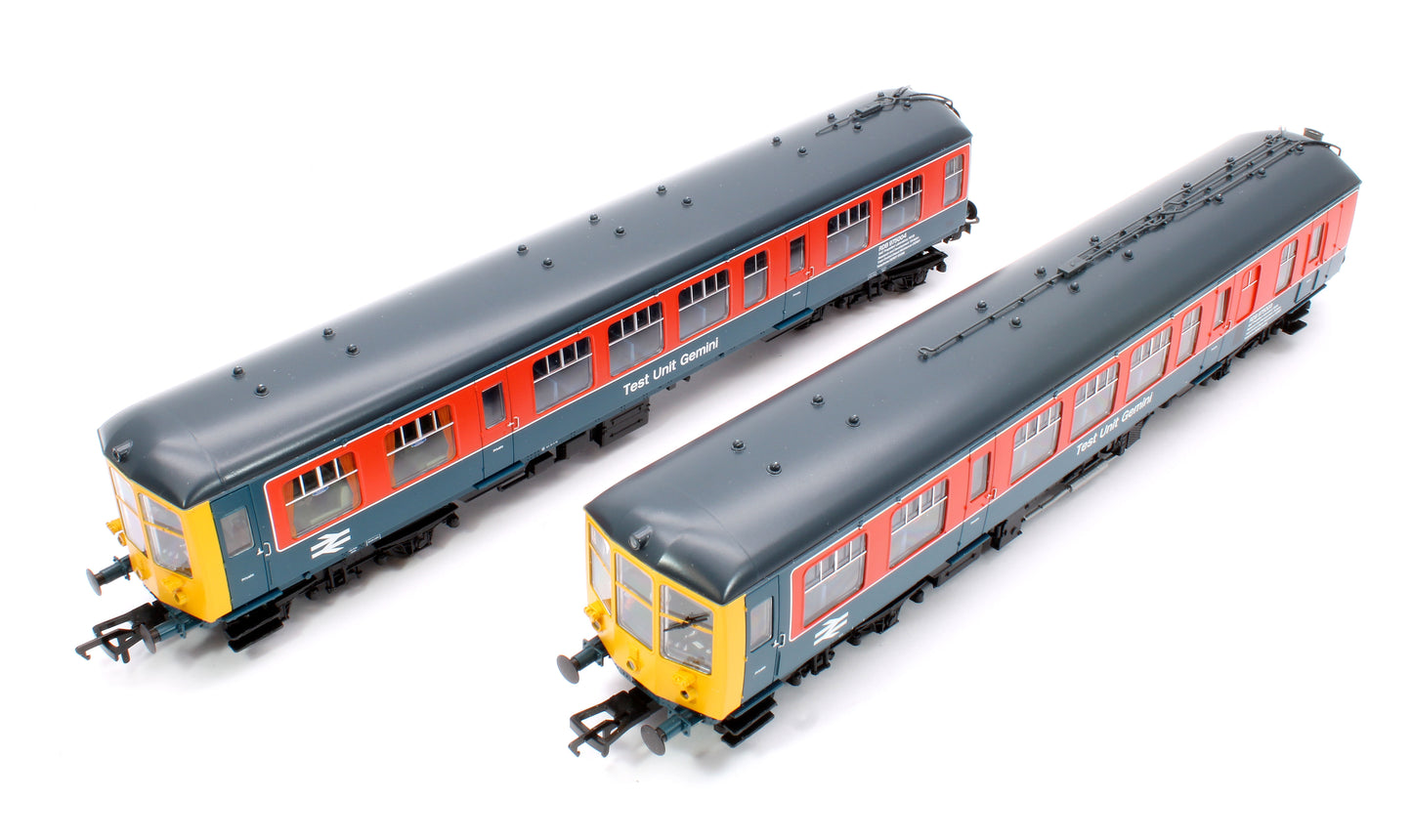Bachmann 32-515Z Derby Lightweight 2-Car BEMU 'Test Unit Gemini' BR RTC (Original)














Product Details
| SKU | BAC-32-515Z |
|---|---|
| Vendor | Bachmann |
| Categories | Bachmann Bachmann OO Gauge Best selling products Diesel Locomotives Era 7 Era 8 Exclusive to Rails Featured Gift Ideas HO-OO In stock Items Latest Releases Locomotives New products OO Gauge Diesel Locomotives OO Gauge Latest Releases OO Gauge Locomotives OO Gauge scale |
| Scale | OO Gauge |
| Share | |
| Features |
|
Product Description
EXCLUSIVE TO RAILS OF SHEFFIELD
Derby Lightweight 2-Car DMU 'Test Unit Gemini' BR RTC (Original)
This model is based on Bachmann's original 2011 Derby lightweight DMU tooling. Our BEMU model is as close as possible to replicating this unique prototype as the tooling will allow.
Prototype History
The British Rail BEMU was an experimental two-car battery electric multiple unit (BEMU), converted from the prototype Derby Lightweight Diesel multiple units.
The train was powered by many lead-acid batteries , and was used on the Deeside Railway from Aberdeen to Ballater in Scotland from April 1958 until it was finally withdrawn in December 1966. The North of Scotland Hydro-Electric Board initiated the design and was a joint sponsor. The board promised to supply power at three farthings per unit for a fixed two-year period. It provided an 11kV supply to a charger at Aberdeen's platform 1 and a 6.6kV supply to a charger at Ballater.
The train then spent a short time in storage at Inverurie Works, and at Hyndland Shed in Glasgow, before being transferred to departmental use as test train "Gemini" (or "Laboratory 16") for use at the Railway Technical Centre, at Derby. It lasted in this role until it was withdrawn in 1984, and was eventually bought for preservation at the proposed West Yorkshire Transport Museum , where it was returned to working order.
The museum placed it on loan to the East Lancashire Railway in 1994 where, after asbestos was removed and the batteries refurbished, it was used on some services until 2000. After the museum went into liquidation, the unit was purchased by the Royal Deeside Railway near Crathes, in 2001. It is now back in Scotland, where it is undergoing refurbishment.













